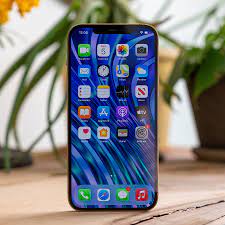In the recently published eBook, "The Qualitative Edge", we explored the role of qualitative market...
Postcard from the Qualitative Edge: 3 Customer Experience Essentials for Business Apps
![]()
As a follow-up to my eBook the Qualitative Edge that we published this Summer as part of our FireHose™ ePub series, here are some insights from our recent research that you may find useful in your work. If you have not yet obtained your copy of the Qualitative Edge, it is available for complimentary download here.
- Predictability in the customer experience:

In recent testing on a new software solution for end users, predictability in app performance emerged as an often-overlooked attribute that end users deem to be especially important to a positive customer experience. Respondents in this qualitative in-depth research study felt app developers often pay more attention to more esoteric aspects of product design, that while important in making for a compelling customer experience, are not as important as predictable app performance. When asked to provide examples, two notable ones that emerged are:- The most recent versions of note-taking app Evernote
- Microsoft’s latest foray into the phone market, the Android OS based Surface Duo, although at the time of writing this, an updated version of the product has been released that purports to have fixed many of these issues.
- Outdated business apps:

Many business apps in areas such as supply chain and procurement were mentioned as having outdated designs. While unpredictability was not the main issue with these, outdated designs made navigating these more difficult, which the end user respondents in our study felt had the same impact on usability as unpredictability. This is one of the factors cited earlier this year that caused Citibank employees to erroneously disperse over $900 million to customers. Below is the well-publicized screen shot from March 2021 when the error was discovered.
![]()
Forrester Research used the term “interest on design debt” to describe the cost of poorly designed legacy business apps to businesses. Covid’s impact on accelerating digital transformation and app modernization will likely have an impact on alleviating this problem.
- Mobile continuity:

In the previously mentioned research above, end users also valued app designs that were congruent with mobile versions. An often-mentioned best practice example was the predictability in functionality and operation between Amazon’s shopping app and its mobile counterpart.
Lastly, our thesis on the importance of qualitative research data in the era of Big Data was validated in a recent Wall Street Journal article titled Why Companies Shouldn’t Give Up on Focus Groups. To quote a passage that aligns perfectly with the key concepts from the Qualitative Edge:
“In an age when big data, or quantitative research, has seduced many companies into thinking they know their customers better than their customers know themselves, there is a growing realization that even if the numbers don’t lie, they can be seriously misleading. To really understand the beliefs, motivations and passions that move people, it is still necessary to sit down and listen to them, which is what qualitative research is all about.”
For more insights, please see our blog post from earlier this year citing Clayton Christensen’s seminal work in this area: https://www.siliconvalleyrg.com/svrg-blog/big-data-small-data